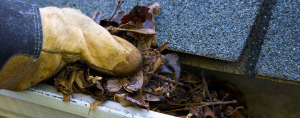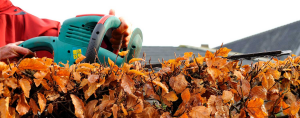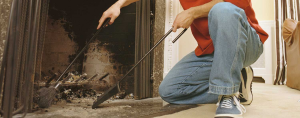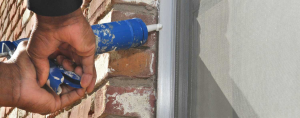As cold weather approaches, there are several things you can do around the house to make sure you and your family stay warm and safe all winter. These seven steps can ensure your house will be in top shape for whatever winter brings.
1. Protect Your Pipes:

We all know water expands as it freezes. If water inside your pipes freezes, it will expand, too, which can cause your pipes to crack and burst. Pipes also can burst when pressure builds up behind a chunk of ice, which is why it’s a good idea to leave faucets dripping in very cold weather. Either way, a burst pipe can cause massive damage. Take a few steps to winterize your pipes and avoid a potentially catastrophic claim.
Drain water from outdoor faucets and sprinkler systems to keep those pipes from freezing.
Disconnect and store outdoor hoses; cover outdoor faucets with foam insulators.
Protect water pipes that run through unheated areas of your home with insulation, such as the attic, basement, or garage.
Pro Tip: Know where your water shutoff valve is so that you can turn off the water in case of an emergency. Typically it’s located in the basement or buried near the road.
2. Check the Heat:

The time to be sure you’re going to stay warm all winter is before the weather gets too cold. Check your furnace by turning on the heat and the blower to be sure they’re operating as they should.
Change your furnace filter at the start of the season and then every two to four months. Filters get dirty much more quickly if your home is dusty or if you have furry or feathery pets. Clogged or dirty filters are less efficient, which means your home might not warm up properly.
Consider installing a programmable thermostat if you don’t have one. Programming it to be cooler at night and when you’re not at home will save you money, and you can program it to be warmer for when you return or get up on cold winter mornings.
Pro Tip: Reverse the direction of your ceiling fans. Everybody thinks of using fans in the summer, but they can help you stay warm in winter too. Set the blades to turn clockwise to circulate warm air from the ceiling down into the room.
3. Prevent Ice Dams:

Ice dams form when heat escapes through the roof and melts snow that’s settled there. That snowmelt flows to your roof’s edge and refreezes, usually at the eaves. Those pretty icicles can signal an ugly ice dam underneath. The problem with an ice dam is that snow that later melts can’t properly drain, so it has to go somewhere… and that might be through a leak in your roof, causing water damage in your home.
Fortunately, a few simple steps before the temperature starts to drop can go a long way toward preventing all of this:
Clogged gutters and downspouts are the No. 1 cause of ice dams. Clean them out to keep water flowing during the winter.
Seal places that may allow warm air to leak from your home to your attic, such as around vent pipes, exhaust fans, chimneys, attic hatches, and light fixtures.
Be sure soffit vents, which are along the eaves of the house and allow air to flow into the attic, are clear.
If you’ve had problems with ice dams before or have reason to suspect you might this year, you can take these additional steps:
Install snow and ice slides to prevent ice and snow from “bonding” to your roof.
Install a rubberized ice and water shield beneath the roof shingles, going three to six feet back from the eaves.
Hire a roofer to install heat cable along the eaves to melt ice.
Add additional insulation to your attic floor.
4. Clean and Store Lawn Equipment:

After a summer of yard work, gas-powered equipment such as mowers, trimmers, tillers, and chippers can all benefit from service before being stored for the winter. This basic checklist will get you started on equipment maintenance, but be sure to check the owner’s manual for any specific requirements for your machines.
Empty all of the fuel. Gas can degrade all the time, and the ethanol in E10 gas can damage fuel lines and other components while sitting unused. Try to use up most of the fuel during the last mowing of the season. You can remove what’s left with a meat baster, then run the engines until they stop. Check with your local waste management or public works department for guidance on how to dispose of the fuel.
Clean the machine of oil and yard debris, and sharpen the blades.
Store them for winter in a basement, garage, or covered storage shed where they’re safe from the weather.
5. Inspect the Fireplace and Chimney:

There’s nothing like the glow of a fire to warm up a winter evening. But before you light up that first log, make sure your fireplace and chimney are clean and critter-free.
A professional chimney sweep can clean out soot and other debris that could catch fire. Keep your home’s warm air from escaping out the chimney when you’re not using it by keeping the flue closed all the way. You shouldn’t be able to feel any cold air coming down the chimney.
You can also install glass fireplace doors or a chimney inflatable that blocks cold air from coming down the chimney and keeps in warm air.
6. Seal Windows and Doors:

Gaps around windows and doors can make it tough to keep your house warm in winter. Caulk around windows and install weather stripping around doors as needed. This minor and inexpensive task can help you save on heating costs.
If your windows and doors are older, they may be inefficient single-pane windows or uninsulated doors. Consider upgrading to double- or even triple-pane windows and insulated doors and garage doors to boost the energy efficiency of your home.
Another option is to add storm windows and doors. Remove, wash and store screens for the spring before you have them installed.
7. Stock Up on Cold-weather Essentials:
When winter storms hit, they often come with power outages. To ensure you and your family are prepared for anything Mother Nature throws at you this winter, you will want to have an emergency kit ready. Explore for ideas of what to put in it, and consider having these cold-weather specific items on hand as well:
A working, fully charged fire extinguisher.
An alternative heat source such as a generator, wood-burning stove, or fireplace.
Sand, ice melt, and a shovel if where you live is prone to ice and snow (avoid using kitty litter, as it doesn’t provide good traction and can make a mess).
You should also develop a plan for communicating or meeting up with family in case you aren’t together when a winter storm hits.
And get your car ready too. Whether you live in a cold-weather climate or just plan to visit one, you will want to keep essentials in you car for winter-weather emergencies.
A storm or power outage in winter can be dangerous, even when you’re in your car or home. Be prepared this winter to weather the storms and cold.
Copyright 2022 by Maintenance Heroes a division of Occupancy Heroes Incorporated.